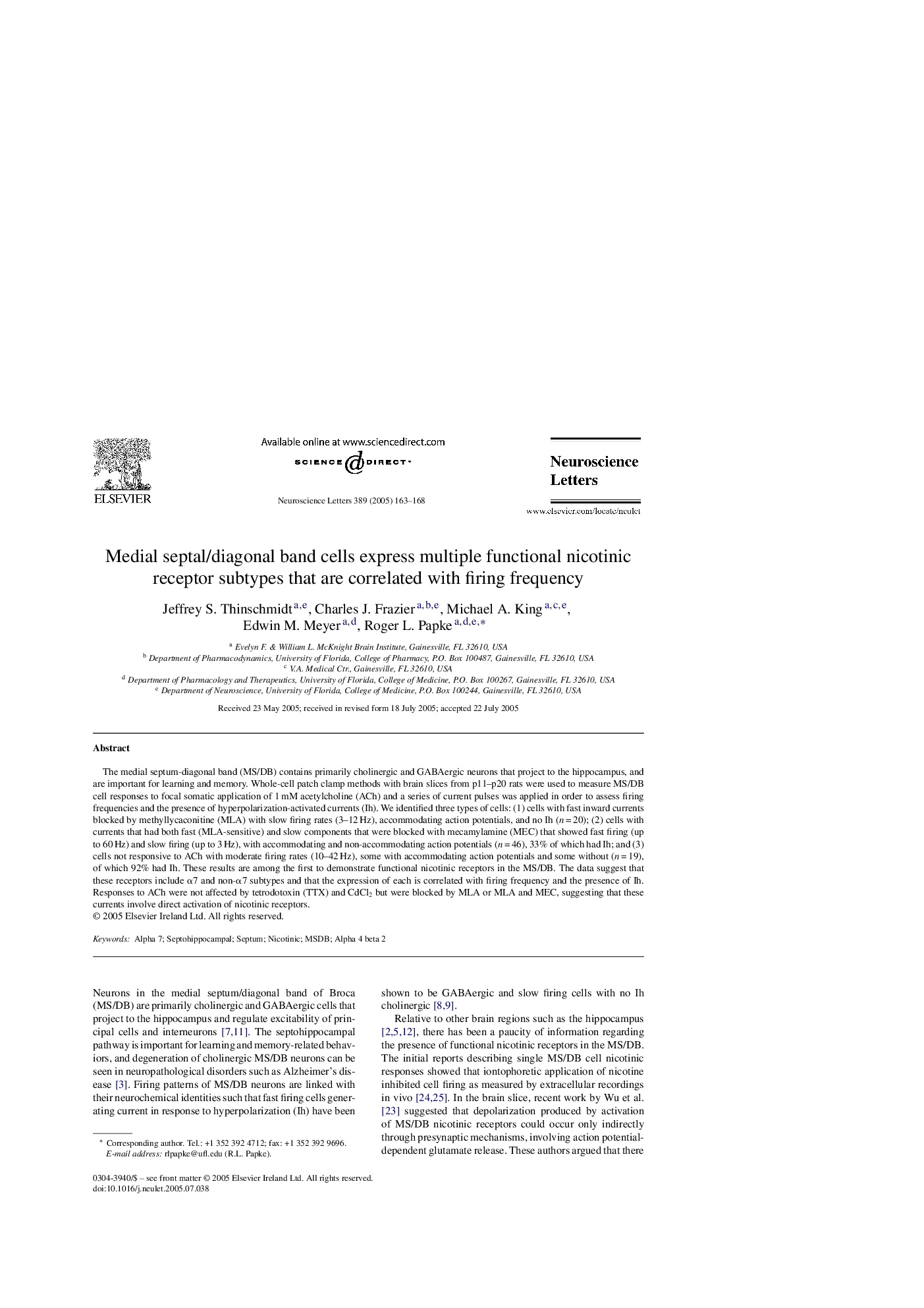| Article ID | Journal | Published Year | Pages | File Type |
|---|---|---|---|---|
| 9428937 | Neuroscience Letters | 2005 | 6 Pages |
Abstract
The medial septum-diagonal band (MS/DB) contains primarily cholinergic and GABAergic neurons that project to the hippocampus, and are important for learning and memory. Whole-cell patch clamp methods with brain slices from p11-p20 rats were used to measure MS/DB cell responses to focal somatic application of 1 mM acetylcholine (ACh) and a series of current pulses was applied in order to assess firing frequencies and the presence of hyperpolarization-activated currents (Ih). We identified three types of cells: (1) cells with fast inward currents blocked by methyllycaconitine (MLA) with slow firing rates (3-12 Hz), accommodating action potentials, and no Ih (n = 20); (2) cells with currents that had both fast (MLA-sensitive) and slow components that were blocked with mecamylamine (MEC) that showed fast firing (up to 60 Hz) and slow firing (up to 3 Hz), with accommodating and non-accommodating action potentials (n = 46), 33% of which had Ih; and (3) cells not responsive to ACh with moderate firing rates (10-42 Hz), some with accommodating action potentials and some without (n = 19), of which 92% had Ih. These results are among the first to demonstrate functional nicotinic receptors in the MS/DB. The data suggest that these receptors include α7 and non-α7 subtypes and that the expression of each is correlated with firing frequency and the presence of Ih. Responses to ACh were not affected by tetrodotoxin (TTX) and CdCl2 but were blocked by MLA or MLA and MEC, suggesting that these currents involve direct activation of nicotinic receptors.
Related Topics
Life Sciences
Neuroscience
Neuroscience (General)
Authors
Jeffrey S. Thinschmidt, Charles J. Frazier, Michael A. King, Edwin M. Meyer, Roger L. Papke,
